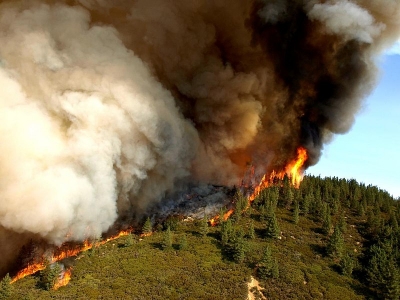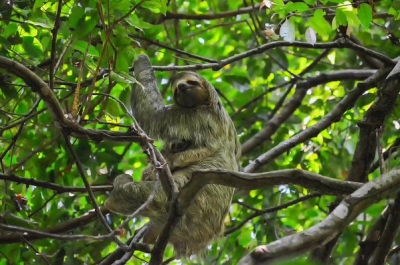
An unplanned, uncontrolled fire that burns in a natural area such as a forest, grassland, or prairie, wildfires can happen anywhere at any time. Likely caused by human activity or natural phenomenon like lightning, it is not known as to how over half of the recorded wildfires began. Even though wildfires keep the ecosystem healthy and are even essential for the continued survival of certain plant species, they also simultaneously impact weather and climate by releasing large amounts of carbon dioxide, carbon monoxide, and fine particulate matter into the atmosphere.
Wildfires can burn in vegetation located both in and above the soil. Ground fires typically ignite in soil thick with organic matter that can feed the flames, like plant roots. Ground fires can smolder for a long time—even an entire season—until conditions are right for them to grow to a surface or crown fire. Surface fires, on the other hand, burn in dead or dry vegetation that is lying or growing just above the ground. Parched grass or fallen leaves often fuel surface fires. Crown fires burn in the leaves and canopies of trees and shrubs.
Some regions, like the mixed conifer forests of California’s Sierra Nevada mountain range, can be affected by different types of wildfires. Sierra Nevada forest fires often include both crown and surface spots.
Wildfires can start with a natural occurrence—such as a lightning strike—or a human-made spark. However, it is often the weather conditions that determine how much a wildfire grows. Wind, high temperatures, and little rainfall can all leave trees, shrubs, fallen leaves, and limbs dried out and primed to fuel a fire. Topography plays a big part too: flames burn uphill faster than they burn downhill.
Wildfires that burn near communities can become dangerous and even deadly if they grow out of control. For example, the 2018 Camp Fire in Butte County, California destroyed almost the entire town of Paradise; in total, 86 people died.
Still, wildfires are essential to the continued survival of some plant species. For example, some tree cones need to be heated before they open and release their seeds; chaparral plants, which include manzanita, chamise (Adenostoma fasciculatum), and scrub oak (Quercus berberidifolia), require fire before seeds will germinate. The leaves of these plants include a flammable resin that feeds fire, helping the plants to propagate. Plants such as these depend on wildfires in order to pass through a regular life cycle. Some plants require fire every few years, while others require fire just a few times a century for the species to continue.
Wildfires also help keep ecosystems healthy. They can kill insects and diseases that harm trees. By clearing scrub and underbrush, fires can make way for new grasses, herbs, and shrubs that provide food and habitat for animals and birds. At a low intensity, flames can clean up debris and underbrush on the forest floor, add nutrients to the soil, and open up space to let sunlight through to the ground. That sunlight can nourish smaller plants and give larger trees room to grow and flourish.
While many plants and animals need and benefit from wildfires, climate change has left some ecosystems more susceptible to flames, especially in the southwest United States. Warmer temperatures have intensified drought and dried out forests. The historic practice of putting out all fires also has caused an unnatural buildup of shrubs and debris, which can fuel larger and more intense blazes.
Credit : National geographic
Picture Credit : Google






